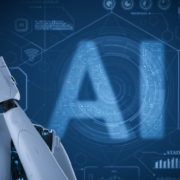EEOC Warns About Us Artificial Intelligence
Artificial Intelligence (AI) has revolutionized various industries, including Human Resources (HR), by automating processes, streamlining recruitment, and enhancing decision-making. AI in HR is often touted as an efficient, unbiased tool to find the best talent. However, concerns have arisen about AI’s potential to discriminate in HR practices. In this article, we will explore how AI might unintentionally perpetuate biases and discrimination in hiring and other HR processes.
Data Bias
AI systems in HR often rely on historical data to make predictions and recommendations. The problem is that this historical data can contain biases. If past hiring decisions were made with human biases, AI algorithms trained on such data might perpetuate these biases, leading to discriminatory outcomes.
For example, if a company historically favored candidates from certain demographics, an AI system might inadvertently prioritize candidates with similar characteristics, even if they are not the most qualified for the job.
Algorithmic Bias
Algorithms play a pivotal role in AI’s decision-making processes. The design and configuration of these algorithms can introduce biases if not carefully crafted and tested. Biases can creep in through various stages of AI development, including data preprocessing, feature selection, and model training.
Algorithmic biases can result in the over- or under-representation of certain groups. For instance, if an AI system identifies attributes like names or locations as predictive of job performance, it might disadvantage individuals with names or locations associated with underrepresented groups.
Lack of Transparency
Another challenge with AI in HR is the lack of transparency. Most AI models are considered “black boxes,” meaning their inner workings are not easily interpretable. This opacity can make it difficult to identify and rectify biases in the system. HR professionals may not be able to explain why an AI system made a particular recommendation or decision, leading to mistrust and frustration.
Amplifying Existing Inequalities
AI-driven recruitment tools may also perpetuate existing inequalities in the job market. For example, if a company primarily recruits from elite universities, an AI system may continue this trend, even if the talent pool from other institutions is equally or more qualified. This practice exacerbates disparities in opportunity, hindering diversity and inclusion efforts.
Mitigating AI Discrimination in HR Practices
Addressing AI discrimination in HR is essential for creating a fair and diverse workforce. Here are some steps that organizations can take to mitigate these issues:
- Diverse Training Data: Ensure that the training data for AI systems is diverse and free from historical biases.
- Regular Audits: Conduct regular audits of AI systems to identify and address biases. It’s important to have checks and balances in place to monitor the technology.
- Transparency: Encourage AI developers to create more transparent systems so that HR professionals can understand and interpret the decision-making process.
- Bias Mitigation Algorithms: Invest in the development of algorithms that actively detect and mitigate biases in real-time.
- Inclusive AI Development Teams: Form diverse teams when designing and implementing AI systems to consider various perspectives and reduce the risk of unconscious biases.
AI in HR has the potential to be a valuable tool for improving hiring and other HR practices. However, the risk of discrimination through AI systems is real and should not be underestimated. Organizations must be vigilant in addressing this issue, working towards creating more inclusive and unbiased HR processes, and promoting diversity and equal opportunities in the workforce. By understanding the potential pitfalls and taking proactive steps, we can harness the benefits of AI while minimizing its capacity to discriminate.




